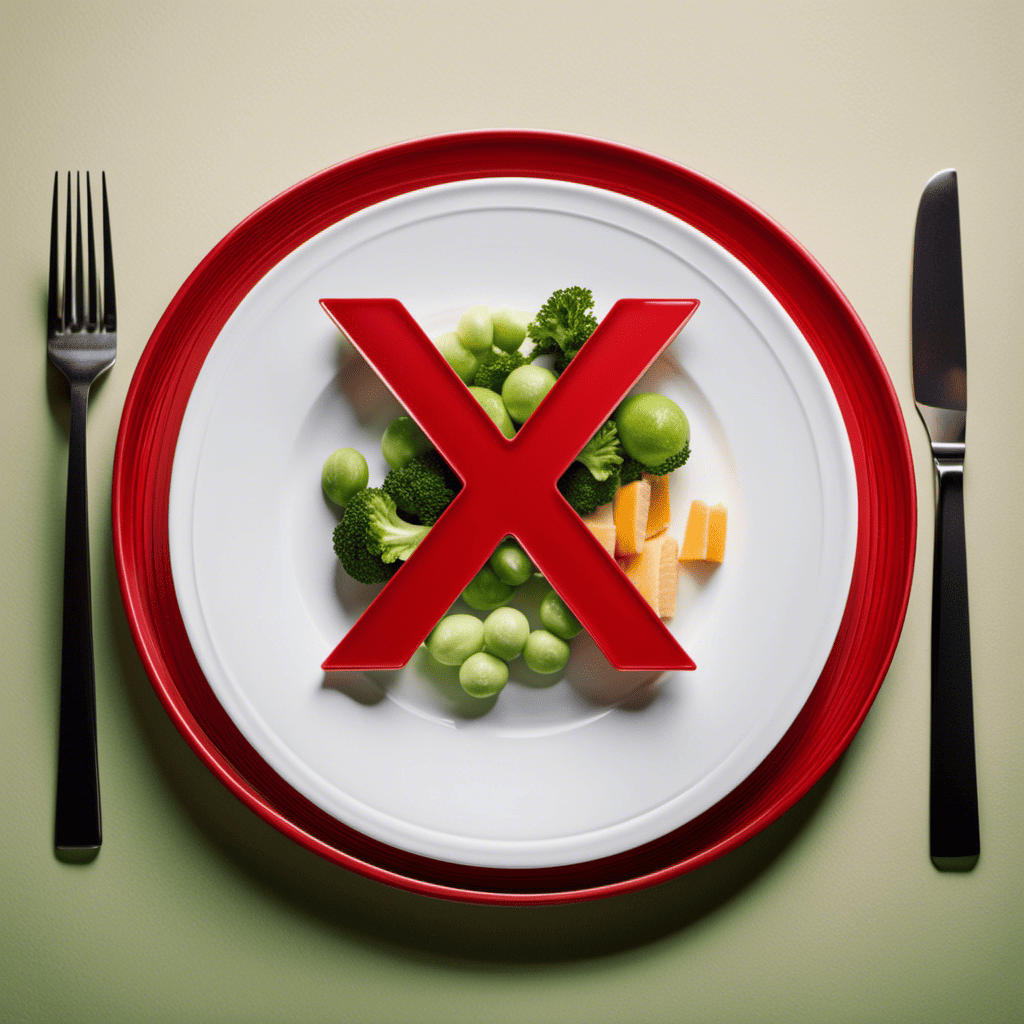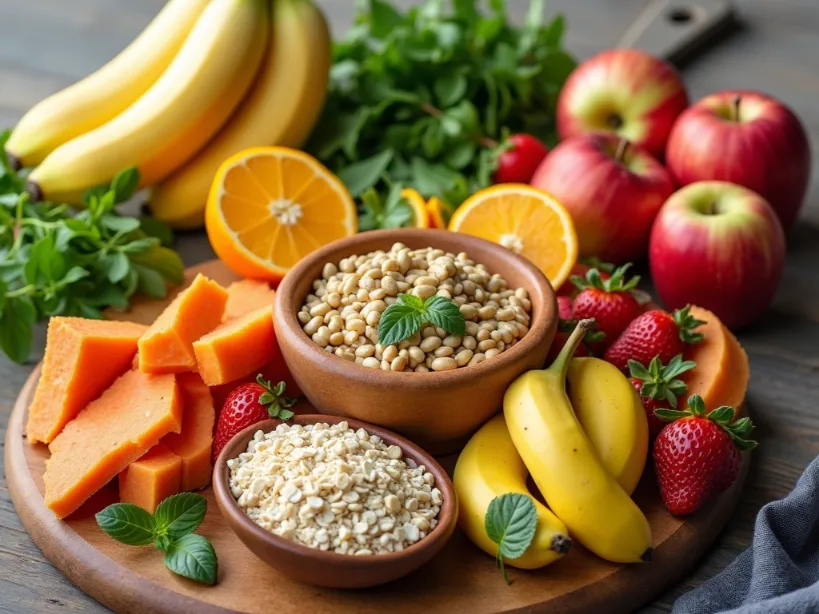Are you tired of feeling sluggish and struggling to lose weight? It’s time to take control and supercharge your metabolism! Understanding your basal metabolic rate (BMR) and total daily energy expenditure (TDEE) is the key. By calculating these numbers, you’ll gain valuable insight into how many calories your body needs to function optimally. Discover the factors that affect your metabolism and learn practical strategies to boost it. Get ready to debunk common misconceptions—like whether a person’s metabolism remains constant throughout life—and unlock the freedom of a revved-up metabolism!
Key Takeaways

- Metabolism determines calorie burn at rest and is crucial for weight loss and hormonal health.
- Understanding BMR (basal metabolic rate) helps calculate calorie intake for weight maintenance.
- TDEE (total daily energy expenditure) is influenced by age, gender, weight, height, and activity level.
- Tracking calorie intake and expenditure helps manage TDEE and make informed decisions about diet and exercise.
The Basics of Metabolism
To understand the basics of metabolism, you need to know how your BMR (Basal Metabolic Rate) and TDEE (Total Daily Energy Expenditure) affect your body’s ability to burn calories. Metabolism refers to the chemical processes that occur within your body to maintain life. It is responsible for converting food into energy, which is crucial for weight loss and maintaining hormonal balance.
Metabolism plays a vital role in weight loss because it determines how many calories your body burns at rest. Your BMR is the number of calories your body needs to perform basic functions like breathing and digestion while at rest. By understanding your BMR, you can determine how many calories you need each day to lose or maintain weight.
Additionally, metabolism impacts hormonal balance in the body. Hormones play a key role in regulating various bodily functions including appetite, energy expenditure, and fat storage. When your metabolism is functioning optimally, it helps maintain a healthy balance of hormones such as insulin, leptin, and ghrelin that influence hunger levels and fat storage.
Now that you understand the importance of metabolism in both weight loss and hormonal balance, let’s delve deeper into what exactly BMR entails.
Next, we will explore what BMR stands for and its significance in determining calorie needs.
What is BMR?

Basal Metabolic Rate (BMR) Calculator
Unlock the Secret to Your Body's Energy Needs
Your Basal Metabolic Rate:
What is BMR?
Basal Metabolic Rate (BMR) is the number of calories your body burns while at rest. It represents the minimum amount of energy needed to keep your body functioning, including breathing and keeping your heart beating.
Factors Affecting BMR:
- Age: BMR typically decreases with age
- Gender: Men generally have a higher BMR than women
- Body composition: More muscle mass increases BMR
- Genetics: Some people naturally have a higher or lower BMR
- Hormones: Thyroid hormones can affect BMR
Note: This calculator uses the Mifflin-St Jeor Equation. For a more accurate BMR, consult with a healthcare professional.
Understanding what BMR is can help you determine how many calories your body needs to function. BMR stands for Basal Metabolic Rate, which refers to the number of calories your body burns at rest to maintain basic bodily functions such as breathing, circulation, and cell production. Here are three reasons why understanding BMR is crucial:
Accurate Calorie Intake: Knowing your BMR allows you to calculate the number of calories needed to maintain your current weight. This information helps you make informed choices about how much food you should consume daily.
Weight Loss Guidance: By understanding your BMR, you can create a calorie deficit by consuming fewer calories than your body needs. This deficit leads to weight loss because it forces your body to tap into stored fat for energy.
Personalized Approach: Everybody’s BMR is different based on factors like age, gender, weight, and muscle mass. Understanding these variables enables you to tailor your nutrition plan and exercise routine specifically to meet your goals.
Transitioning into how to calculate your BMR:
Now that you understand the importance of knowing your Basal Metabolic Rate (BMR), let’s explore how you can calculate it accurately without any complicated steps or formulas.
How to Calculate Your BMR
Now that you’ve grasped the importance of knowing your BMR, let’s dive into how you can accurately calculate it. There are several BMR calculation methods available that take into account different factors to provide an estimate of your basal metabolic rate. One commonly used method is the Harris-Benedict equation, which considers your age, gender, weight, and height. Another popular method is the Mifflin-St Jeor formula, which also takes into account these factors but uses slightly different calculations.
To ensure accuracy when calculating your BMR, it’s important to consider certain factors that can influence its accuracy. These factors include your muscle mass, body composition, hormonal balance, and any underlying health conditions you may have. For example, individuals with more muscle mass tend to have a higher BMR because muscles require more energy at rest compared to fat.
Understanding TDEE (Total Daily Energy Expenditure), which goes hand in hand with BMR calculations, allows you to determine how many calories you need daily based on your activity level. By understanding TDEE and making appropriate adjustments based on your goals (such as weight loss or maintenance), you can create a personalized plan for optimal nutrition and fitness.
Now that we’ve discussed how to accurately calculate your BMR and understand the factors influencing its accuracy, let’s move on to understanding TDEE without writing’step’.
Understanding TDEE

Total Daily Energy Expenditure (TDEE) Calculator
Discover Your Daily Calorie Needs
Your Total Daily Energy Expenditure:
What is TDEE?
Total Daily Energy Expenditure (TDEE) is the total number of calories you burn in a day. It includes your Basal Metabolic Rate (BMR) and the calories burned through daily activities and exercise.
TDEE Components:
- BMR (Basal Metabolic Rate): Calories burned at rest
- TEF (Thermic Effect of Food): Calories burned digesting food
- NEAT (Non-Exercise Activity Thermogenesis): Calories burned through daily activities
- EAT (Exercise Activity Thermogenesis): Calories burned through exercise
Note: This calculator uses the Mifflin-St Jeor Equation for BMR and applies an activity factor. For a more accurate TDEE, consider using a fitness tracker or consulting with a professional.
When it comes to understanding TDEE (Total Daily Energy Expenditure), there are several factors that can affect it. These factors include your age, gender, weight, height, and activity level. By tracking your calorie intake and expenditure accurately, you can better understand how these factors impact your TDEE and make informed decisions about your diet and exercise routine. Understanding the importance of TDEE is crucial for achieving and maintaining a healthy weight as it helps determine how many calories you need to consume in order to maintain, gain, or lose weight effectively.
Factors Affecting TDEE
One of the factors that affects your Total Daily Energy Expenditure (TDEE) is the amount of physical activity you engage in. Hormonal influences and dietary choices also play a significant role in determining your TDEE. When it comes to physical activity, the more active you are, the higher your TDEE will be. Regular exercise not only burns calories during the activity but also increases your metabolism, leading to an elevated TDEE even at rest. Hormonal influences, such as thyroid hormones and cortisol levels, can affect your metabolic rate and thus impact your TDEE. Additionally, the type and composition of foods you consume can influence how many calories your body burns during digestion and absorption, further affecting your TDEE. Understanding these factors can help you make informed decisions about managing and optimizing your TDEE.
Now let’s explore another important aspect of maximizing TDEE: calorie tracking for efficient energy management without feeling restricted or overwhelmed by strict rules.
Calorie Tracking for TDEE
Calorie tracking is a helpful tool for managing and optimizing your Total Daily Energy Expenditure (TDEE) without feeling overwhelmed by strict rules. By keeping track of the calories you consume and expend, you can ensure that you are in a calorie deficit, which is essential for weight loss. It allows you to have the freedom to choose what foods to eat while still achieving your goals. Additionally, tracking your macronutrient distribution can further enhance your progress.
When it comes to achieving a calorie deficit, it’s important to strike a balance between consuming enough nutrients to support your body’s needs and creating an energy deficit. Calorie tracking enables you to monitor your food intake and make adjustments as needed, ensuring that you stay on track with your weight loss journey.
Now that we understand how calorie tracking helps in managing our TDEE effectively let’s dive into the importance of TDEE itself.
Importance of TDEE
Now that you understand how to track your Total Daily Energy Expenditure (TDEE), let’s dive into why it is so important. Your TDEE represents the total number of calories your body needs to maintain its current weight. By knowing this number, you can make informed decisions about your diet and exercise routine.
Exercise plays a crucial role in increasing your TDEE. When you engage in physical activity, whether it’s running, weightlifting, or even walking, your body burns more calories. This not only helps with weight loss but also boosts your metabolism.
However, exercise alone isn’t enough. Your diet is equally important for maintaining a healthy TDEE. Consuming nutrient-dense foods and balancing macronutrients like proteins, carbohydrates, and fats ensures that your body receives the necessary energy to function optimally.
Understanding the importance of exercise and the role of diet in relation to TDEE empowers you to take control of your metabolism and overall health.
Now let’s explore the factors that can affect both BMR and TDEE without any further delay.
Factors Affecting BMR and TDEE
When it comes to age and metabolism, it’s important to understand that as you get older, your metabolism naturally slows down. This means that you may need to adjust your calorie intake and exercise routine to maintain a healthy weight. Additionally, incorporating regular exercise into your routine can help increase your caloric burn and support weight loss or maintenance goals. So, if you’re looking to boost your metabolism and maximize the calories burned during workouts, focusing on both age-related factors and exercise is key.
Age and Metabolism
As you get older, your metabolism naturally slows down due to changes in body composition and hormonal levels. This can make it more challenging to lose weight and maintain a healthy body weight. Hormonal changes, such as a decrease in estrogen and testosterone levels, can contribute to the slowdown in metabolism. Additionally, muscle mass tends to decline with age, which further decreases the number of calories burned at rest.
To better understand how age impacts metabolism, let’s take a look at the following table:
| Age Range | Average Metabolic Rate (calories/day) |
|---|---|
| 20-30 | 1,800 – 2,200 |
| 30-40 | 1,700 – 2,100 |
| 40-50 | 1,600 – 2,000 |
| 50-60 | 1,500 – 1,900 |
| Over 60 | 1,400 – 1,800 |
As you can see from the table above, metabolic rate gradually declines as you age. However, it’s important to note that these are just average values and individual variations exist.
Understanding how age affects your metabolism is crucial for effective weight loss and management. In the next section about exercise and caloric burn…
Exercise and Caloric Burn
To maximize calorie burn during exercise, you’ll want to focus on activities that elevate your heart rate and engage multiple muscle groups. Here are some effective exercises to help you achieve this:
- High-intensity interval training (HIIT): This involves short bursts of intense exercise followed by brief periods of rest. HIIT workouts have been shown to significantly increase calorie burn and improve metabolism speed.
- Strength training: Lifting weights or using resistance bands can help build lean muscle mass, which in turn boosts your metabolism even at rest.
- Cardiovascular exercises: Activities like running, cycling, or swimming not only elevate your heart rate but also engage large muscle groups, resulting in increased caloric expenditure.
Strategies to Boost Your Metabolism

One effective way to boost your metabolism is by incorporating regular strength training into your fitness routine. Strength training not only helps build muscle, but it also increases your Basal Metabolic Rate (BMR), which is the number of calories your body needs to perform basic functions at rest. By increasing your BMR, you can burn more calories throughout the day, even when you’re not exercising.
In addition to strength training, there are other strategies you can implement to further boost your metabolism. First, consider incorporating metabolism boosting foods into your diet. Foods like green tea, chili peppers, and lean proteins have been shown to increase metabolic rate and aid in weight loss. Additionally, making certain lifestyle changes can have a positive impact on your metabolism. Getting enough sleep, managing stress levels, staying hydrated, and eating small frequent meals can all contribute to a faster metabolism.
Myth Vs. Fact: Debunking Common Metabolism Misconceptions
Don’t fall for the myth that skipping meals will boost your metabolism; in fact, it can actually slow it down. Common misconceptions about metabolism can lead to ineffective strategies for weight management. Let’s debunk some of these myths and set the record straight.
Myth #1: Eating small, frequent meals throughout the day speeds up your metabolism.
Fact: The frequency of your meals has little impact on your metabolic rate. What matters most is the total number of calories you consume versus how many you burn.Myth #2: Certain foods have a significant effect on boosting metabolism.
Fact: While some foods may slightly increase calorie expenditure, their impact is minimal. Instead, focus on overall dietary patterns that include a balance of nutrients.Myth #3: You can permanently boost your metabolism through specific exercises or supplements.
Fact: While exercise does temporarily elevate metabolic rate, its long-term effects are modest. Sustainable weight management requires a combination of regular physical activity and a healthy diet.Myth #4: Age determines your metabolic rate.
Fact: While age does play a role in metabolic decline, lifestyle factors such as muscle mass and physical activity level have more significant impacts.Myth #5: Starvation mode slows down metabolism.
Fact: Although extreme calorie restriction can reduce metabolic rate in the short term, it returns to normal once adequate nutrition is restored.
Understanding these metabolism myths allows you to make informed choices about managing your weight effectively. Remember that sustainable weight management involves adopting healthy habits rather than relying on quick fixes or false promises.
Frequently Asked Questions
Can Certain Medical Conditions Affect BMR and Tdee?
Certain medical conditions, such as hormonal disorders, can impact your BMR and TDEE. These conditions can affect how efficiently your body burns calories and can slow down your metabolism. It’s important to address these conditions for optimal metabolic health.
Does Age Have an Impact on Metabolism?
Does age impact your metabolism? Absolutely! As you get older, age-related factors and hormonal changes can slow down your metabolism. But don’t worry, there are ways to supercharge it and keep that fire burning!
Is It True That Eating More Frequently Can Boost Metabolism?
Yes, it is true that eating more frequently can boost your metabolism. By maintaining regular eating patterns, your body stays in an active state, burning calories throughout the day. However, intermittent fasting has also been shown to have metabolic benefits.
Can Stress Affect BMR and Tdee?
Stress can indeed impact your BMR and TDEE. Chronic stress can disrupt hormone levels, affecting your metabolic rate. It’s important to manage stress through techniques like exercise and relaxation to support a healthy metabolism.
Are There Any Specific Foods or Supplements That Can Increase Metabolism?
Certain foods and supplements can naturally boost your metabolism. Incorporate metabolism-boosting foods like green tea, chili peppers, and lean proteins into your diet. Additionally, spices like ginger and cinnamon may also increase metabolic rate.
Conclusion
While we can’t control all aspects of our metabolism, there are many ways we can support and even boost it. By incorporating these strategies into your lifestyle, you can optimize your metabolic health and support your overall well-being.
Remember, sustainable changes are key. Start with small, manageable adjustments and gradually build on them. Your body will thank you for it! By implementing these strategies and understanding the science behind metabolism, you can take control of your metabolic health and work towards a healthier, more energetic you.
Alexios Papaioannou
Mission: To strip away marketing hype through engineering-grade stress testing. Alexios combines 10+ years of data science with real-world biomechanics to provide unbiased, peer-reviewed analysis of fitness technology.
